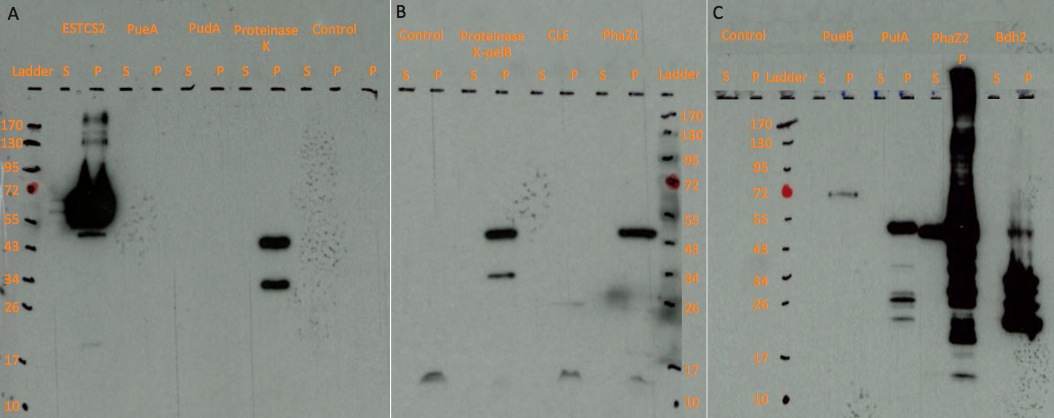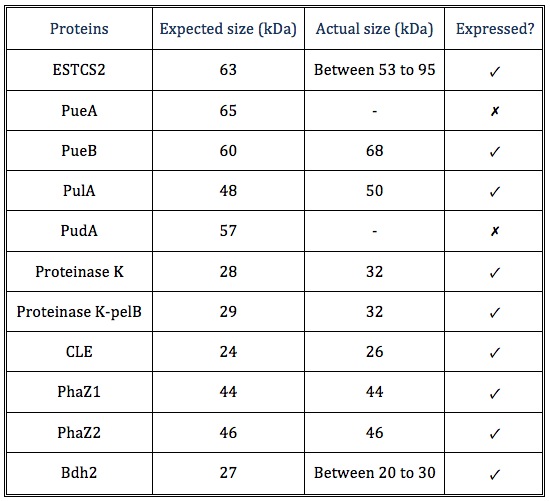Team:Imperial College/Western Blots
From 2013.igem.org
m |
|||
| Line 1: | Line 1: | ||
{{:Team:Imperial_College/Templates:header}} | {{:Team:Imperial_College/Templates:header}} | ||
<h1>Western Blots</h1> | <h1>Western Blots</h1> | ||
| + | |||
| + | Western blot analysis to determine expression and secretion of our constructs. Expression was induced with either Arabinose or Xylose as appropriate and cell lysate and supernatant samples were collected 5 hours post induction. | ||
| + | |||
| + | |||
[[File:Western_blot.png|thumbnail|center|950px|<b>Western blot results on three chemiluminescent-compatible X-ray films. For each protein, we ran both lysed pellet(P) and supernatant(S) sample on gel, in order to test protein expression and secretion respectively.</b>]] | [[File:Western_blot.png|thumbnail|center|950px|<b>Western blot results on three chemiluminescent-compatible X-ray films. For each protein, we ran both lysed pellet(P) and supernatant(S) sample on gel, in order to test protein expression and secretion respectively.</b>]] | ||
Revision as of 13:19, 29 September 2013
Western Blots
Western blot analysis to determine expression and secretion of our constructs. Expression was induced with either Arabinose or Xylose as appropriate and cell lysate and supernatant samples were collected 5 hours post induction.
Results Summary
Almost all the proteins were expressed, except from PueA and PudA. Among the expressed proteins, PhaZ2 is secreted, and ESTCS2 might have been secreted too. We are currently optimising protein secretion using our secretion toolkit.
The actual sizes of some proteins tend to be larger than the expected sizes, probably because these proteins are expressed differently in E. coli compared to the original host, or the protein may have interacted with molecules in the cell.
Some protein have shown very strong signals, possibly because the inducer concentration was particularly high, and protein was overloaded in the wells, leaving signal while moving towards the anode.
Apart from the expected protein band, some weak smaller bands have also been detected. These smaller-sized bands may be the degraded proteins with his or flag tags. However, a dark larger band is present in both proteinase K and proteinase K-pelB sample. This band might be the degraded protein interacts with molecules in the sample, because both proteinase K and proteinase K-pelB have this band. As the unexpected protein band has a similar size to PhaZ1, proteinase K and proteinase K-pelB might be contaminated. This is less likely, since DNA were tested on gel and no contamination was detected.
 "
"





